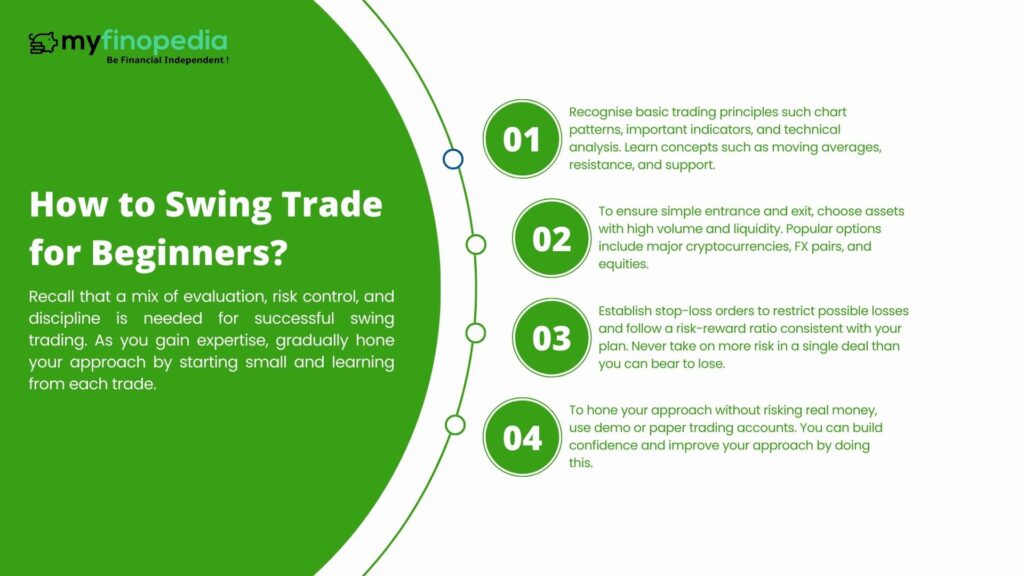Beginners who engage in swing trading aim to profit from short- to medium-term changes in financial market prices. Here’s a quick reference:
- Acquire the Fundamentals: Recognise basic trading principles such chart patterns, important indicators, and technical analysis. Learn concepts such as moving averages, resistance, and support.
- Establish Your Plan: Create a detailed trading plan that includes your time commitment, profit targets, and risk tolerance. Select the stocks you wish to trade as well as the analytical indicators you will employ.
- Select Liquid Markets: To ensure simple entrance and exit, choose assets with high volume and liquidity. Popular options include major cryptocurrencies, FX pairs, and equities.
- Apply Technical Analysis: Examine price charts to find patterns, levels of support, and resistance. Bollinger Bands, moving averages, and the Relative Strength Index (RSI) are examples of common instruments. Combine indicators to get a more complete picture.
- Risk Control is Essential: Establish stop-loss orders to restrict possible losses and follow a risk-reward ratio consistent with your plan. Never take on more risk in a single deal than you can bear to lose.
- Remain Updated: Stay up to date on economic developments and market news that could affect the assets you have selected. This facilitates decision-making and allows you to adjust to shifting market conditions.
- Practice with Simulations: To hone your approach without risking real money, use demo or paper trading accounts. You can build confidence and improve your approach by doing this.
- Patience and discipline: Follow your trading strategy and refrain from making rash decisions. Since not every trade will be profitable, swing trading calls for patience. Gain knowledge from both profitable and losing transactions.
- Keep an Eye on Your Trades: Review and modify your positions frequently in response to changes in the market. When managing your portfolio, take initiative to maximise profits and reduce risks.
- Constant Learning: Keep abreast of market developments, adjust your approach in light of experience, and never stop learning. Successful swing traders adjust to the way the markets move as they do.
Recall that a mix of evaluation, risk control, and discipline is needed for successful swing trading. As you gain expertise, gradually hone your approach by starting small and learning from each trade.






